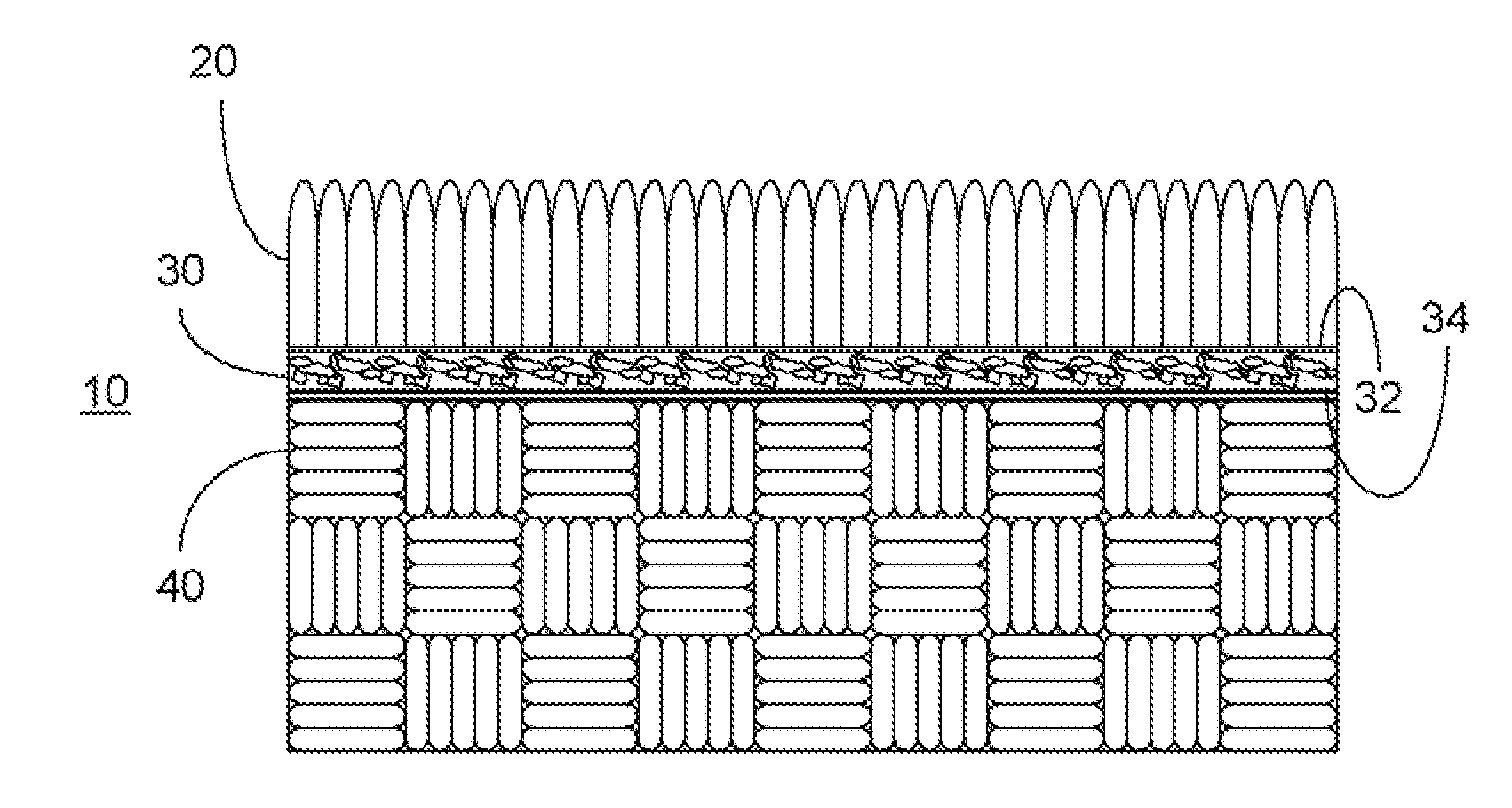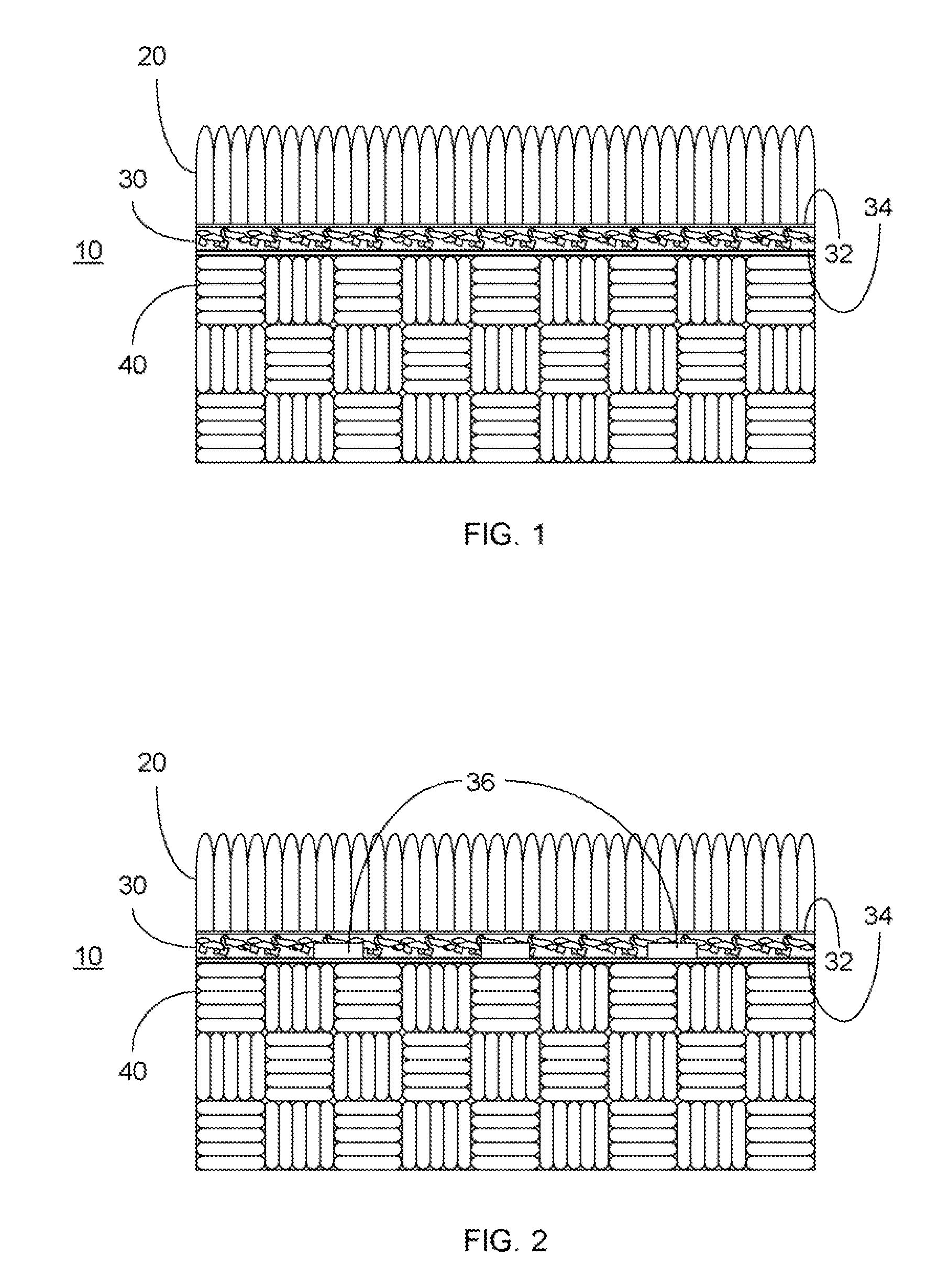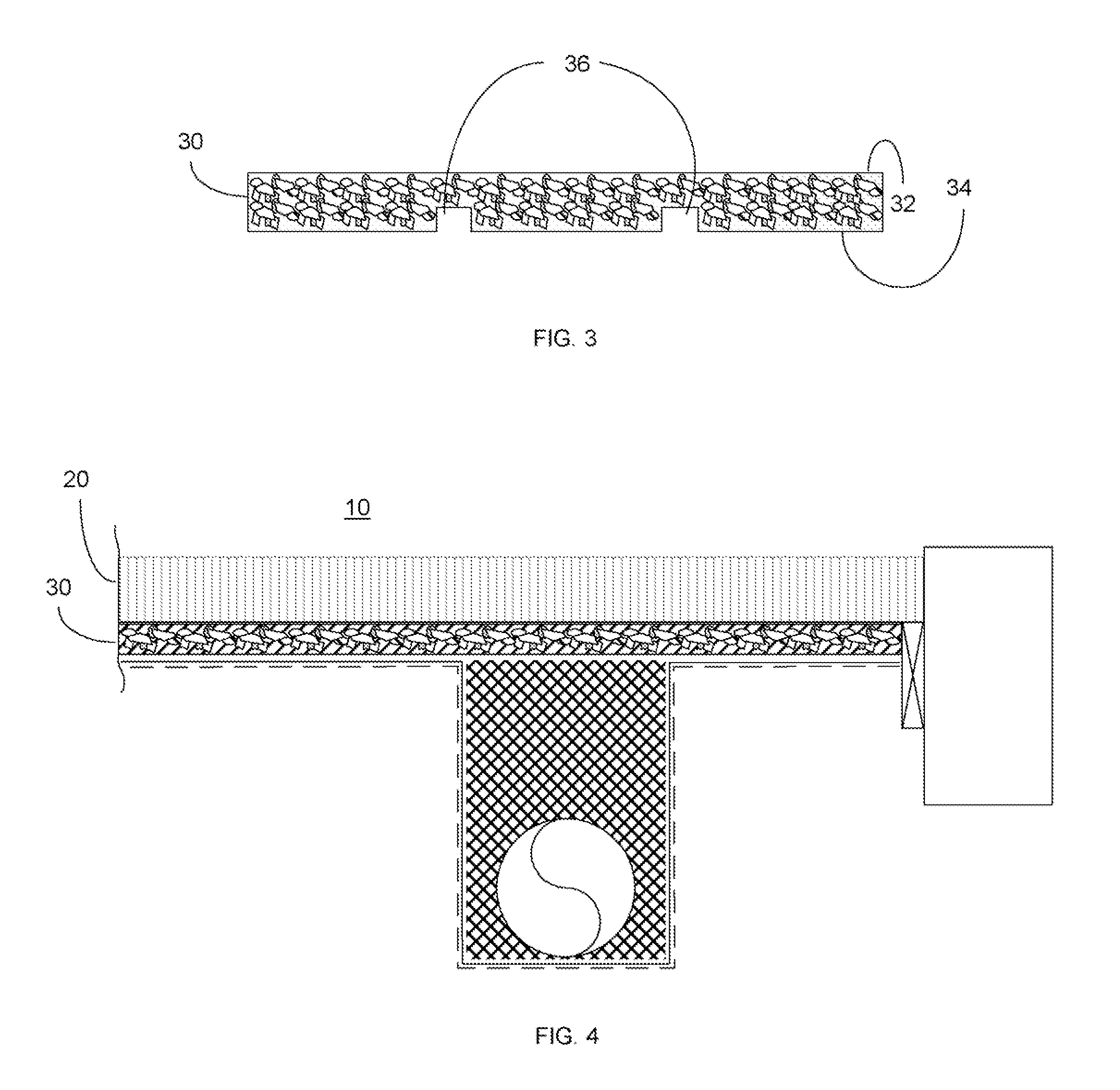Synthetic drainage and impact attenuation system
a drainage system and impact attenuation technology, applied in the field of synthetic turf systems, can solve the problems of reducing the useful life of sport fields, affecting the flow characteristics of sports fields, stressing and damage to paved structures such as roadways, airport runways and parking lots, etc., and achieves the desired flow characteristics and high resistance to compression
- Summary
- Abstract
- Description
- Claims
- Application Information
AI Technical Summary
Benefits of technology
Problems solved by technology
Method used
Image
Examples
Embodiment Construction
[0047]For purpose of illustration, and not to limit generally, the present invention will now be described with specific reference to a synthetic drainable base course with drainage and impact attenuation properties for use with synthetic turf systems. One skilled in the art will appreciate, however, that embodiments of the present invention are not limited to synthetic turf systems and may, for example, be used with natural turf and other systems.
[0048]The present structure consists of selecting a gradation of polyethylene (“pe”) foam in order to allow vertical fluid transmission. Once the gradation is selected, it is randomly adhered together with either heat and or adhesives such that the end product retains a dimension stability of sufficient tensile and compressive strength that allows it to achieve 50% of its originally specified thickness and mechanical values even after 10,000 hours of exposure. Sufficient pressure is placed upon the particulate matter such that a desirable ...
PUM
 Login to View More
Login to View More Abstract
Description
Claims
Application Information
 Login to View More
Login to View More - R&D
- Intellectual Property
- Life Sciences
- Materials
- Tech Scout
- Unparalleled Data Quality
- Higher Quality Content
- 60% Fewer Hallucinations
Browse by: Latest US Patents, China's latest patents, Technical Efficacy Thesaurus, Application Domain, Technology Topic, Popular Technical Reports.
© 2025 PatSnap. All rights reserved.Legal|Privacy policy|Modern Slavery Act Transparency Statement|Sitemap|About US| Contact US: help@patsnap.com



